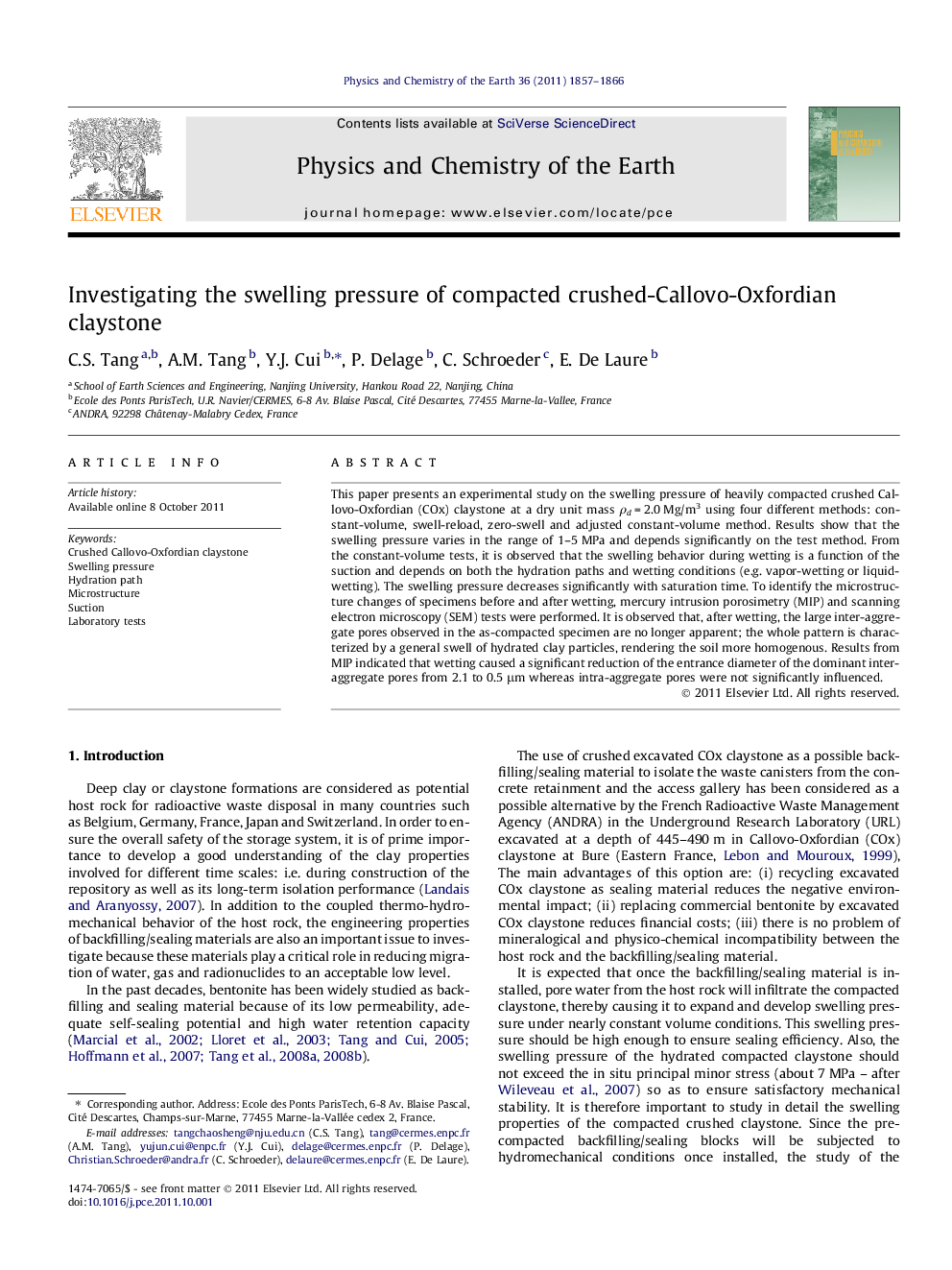| Article ID | Journal | Published Year | Pages | File Type |
|---|---|---|---|---|
| 4721266 | Physics and Chemistry of the Earth, Parts A/B/C | 2011 | 10 Pages |
This paper presents an experimental study on the swelling pressure of heavily compacted crushed Callovo-Oxfordian (COx) claystone at a dry unit mass ρd = 2.0 Mg/m3 using four different methods: constant-volume, swell-reload, zero-swell and adjusted constant-volume method. Results show that the swelling pressure varies in the range of 1–5 MPa and depends significantly on the test method. From the constant-volume tests, it is observed that the swelling behavior during wetting is a function of the suction and depends on both the hydration paths and wetting conditions (e.g. vapor-wetting or liquid-wetting). The swelling pressure decreases significantly with saturation time. To identify the microstructure changes of specimens before and after wetting, mercury intrusion porosimetry (MIP) and scanning electron microscopy (SEM) tests were performed. It is observed that, after wetting, the large inter-aggregate pores observed in the as-compacted specimen are no longer apparent; the whole pattern is characterized by a general swell of hydrated clay particles, rendering the soil more homogenous. Results from MIP indicated that wetting caused a significant reduction of the entrance diameter of the dominant inter-aggregate pores from 2.1 to 0.5 μm whereas intra-aggregate pores were not significantly influenced.
► The swelling behavior was found to be hydration path and hydration process dependent. ► The new constant-volume cell gives good results of swelling pressure. ► Wetting under volume-constrained condition decreased the size of the dominant inter-aggregate pores.
